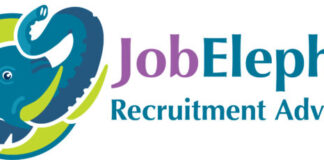
By Paul Mehring, President & Chief Lending Officer, Access Capital
Key takeaways:
-
Now is a prime time for M&A in staffing due to increased investor interest, technology adoption, and owner fatigue — especially in IT, healthcare, and professional services sectors.
-
Strategic acquisitions go beyond scale, offering opportunities for geographic expansion, client and vertical diversification, tech integration, and talent acquisition — but require alignment in culture and operations to succeed.
-
Staffing firms should think like buyers now, ensuring clean financials, scalable systems, and a strong value proposition — even if not actively pursuing a deal — to stay prepared and maximize future opportunities.
The staffing industry is no stranger to change, but the last few years have intensified the pace. As firms navigated pandemic disruptions, wage inflation, and rapid digital transformation, a new reality emerged: survival alone isn’t a strategy. Growth is. And increasingly, that growth is happening through mergers and acquisitions (M&A).
Despite seeing a decline from the record M&A activity in 2022, recent data suggests an impending resurgence and ramp up of deal activity, particularly in healthcare and IT. But what often gets missed in the headlines about buyouts and rollups is this: M&A isn’t just for the giants anymore. For well-run, specialized firms with solid financials, it’s an opportunity to either scale fast or secure a premium valuation.
Whether you’re looking to grow through acquisition or preparing to be acquired in the next few years, the time to think like a buyer is now.
The market is ripe for consolidation
Several converging trends are creating fertile ground for M&A in staffing:
- Private equity and investment from strategic investors. Both are actively investing in staffing companies with niche verticals, growing EBITDA, consistent margins, and revenue growth, experienced management teams, and scalable infrastructure.
- Technology is a key differentiator. Firms that have adopted automation, digital onboarding, and analytics tools are more attractive targets — and more capable acquirers.
- Owner fatigue is real. Many founders who weathered the recent market downturn are unable or unwilling to invest more capital into their businesses and are now evaluating succession plans to include management buyouts, full exits, or partnering with a more progressive firm, creating these acquisition opportunities and offering owners an off-ramp to a liquidity event.
This momentum is particularly strong in sectors like IT, healthcare, and professional services, where margins are healthier and demand is more consistent. But even light industrial and clerical staffing firms are drawing attention if they’ve invested in efficient operations and maintain strong client relationships.
Acquisition isn’t just about scale — it’s about strategy
In staffing, the wrong acquisition can quickly erode value. The right one can unlock new markets, diversify your revenue base, and add depth to your candidate and client pools.
Here are a few strategic goals we see successful acquirers pursue:
- Geographic expansion — increased market share and client concentration without opening new offices.
- Vertical and client diversification to offset cyclicality in any given market by attracting and expanding client base and leveraging existing assets (e.g., recruiters and BDOs).
- Systems, integrations (MSP/VMS) relationships that would take years to develop organically can now be leveraged more efficiently, creating greater value.
- Talent acquisition — unifying recruiters, BDOs, and successful management teams.
Thinking like a buyer means assessing your own business through this same lens. Think for a moment: If someone were looking to acquire your business, what would they see? Where are your vulnerabilities? What drives your value and makes your firm an attractive target?
Preparing for M&A: Key questions to ask now
Even if you’re not actively pursuing a deal, it pays to be ready. Buyers move quickly — and the best opportunities go to those who are prepared.
Ask yourself:
- Do I have clean, accurate financials? This is the first thing a buyer or lender will scrutinize.
- Is my gross margin consistent and strong? Wide swings or compression raise red flags.
- Are my clients concentrated or diversified? High client concentration may lower valuation.
- Have I documented my processes and compliance systems? This reduces post-acquisition risk.
- Is my tech stack scalable? Manual processes can be a deal-breaker in today’s market.
A good rule of thumb: Operate your business as if you were planning to sell it in 12 months. Even if you never do, you’ll end up with a stronger company.
The capital equation: Financing the right deal
Not every staffing firm has the cash on hand for an acquisition — or the patience to wait on a traditional bank. That’s where alternative lenders who specialize in staffing can make a real impact.
Asset-based lenders understand the unique working capital needs of staffing companies. By leveraging the strength of your balance sheet and related collateral (accounts receivable), you may be able to access the capital needed to fund an acquisition without having to give up valuable equity or control.
Just as importantly, the right financing partner can act as a strategic advisor — helping you evaluate deals, understanding inherent risks, and structure a debt financing package to achieve a successful transaction and supporting post-close growth.
Culture and integration: The human side of M&A
It’s tempting to focus purely on financials and operational synergies. But in staffing — where relationships are everything — culture is the X factor.
I’ve known of acquisitions that fell apart and it’s not because the numbers didn’t work, but because the teams were not aligned or the new leadership didn’t respect the legacy of the acquired company. On the flip side, I’ve seen firms thrive post-deal because they prioritized communication, shared values, and created mutual trust with gradual integration.
Successful acquirers treat people as true assets — not just line items. They engage with acquired employees early and often in the process, invest in onboarding/integration and market leading comp plans, to protect what made the business successful in the first place and ensure its future success.
Final thoughts: M&A as a growth mindset
You don’t need to be the next big rollup to benefit from thinking like a strategic acquirer. M&A is as much a mindset as it is a tactic. It forces you to look at your business objectively, identify what drives value, and invest accordingly.
Whether your goal is to grow through acquisition, attract buyers, or simply build a more resilient firm, now is the time to ask: What would make this business irresistible to someone else — and how do I build that today?
 Paul Mehring is the President and Chief Lending Officer of Access Capital, a leading independent lender serving the staffing industry. With decades of experience helping staffing firms fund growth, navigate acquisitions, and optimize their capital structure, Paul brings a strategic, relationship-driven approach to financial solutions. He can be reached at [email protected].
Paul Mehring is the President and Chief Lending Officer of Access Capital, a leading independent lender serving the staffing industry. With decades of experience helping staffing firms fund growth, navigate acquisitions, and optimize their capital structure, Paul brings a strategic, relationship-driven approach to financial solutions. He can be reached at [email protected].





